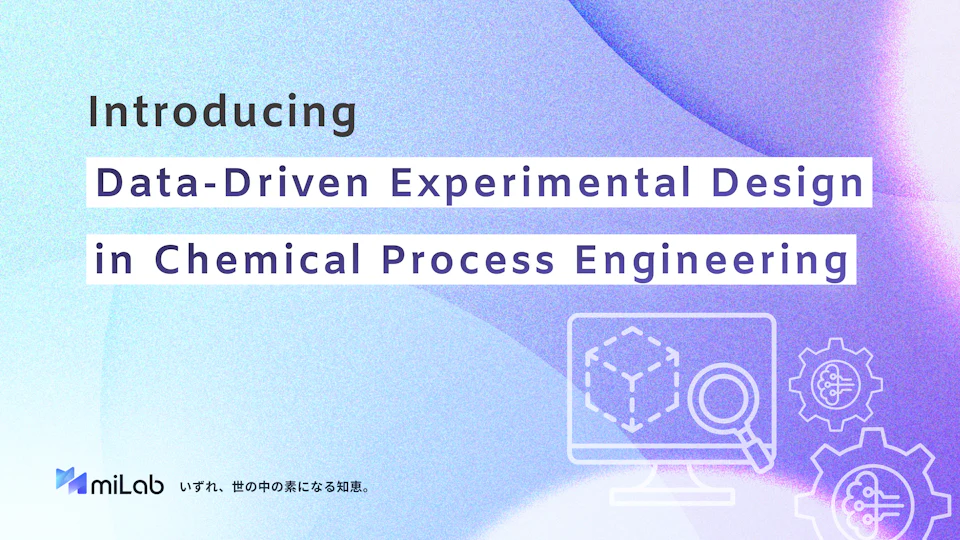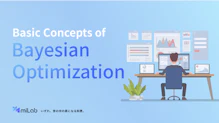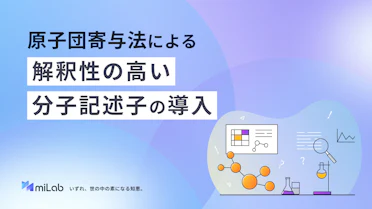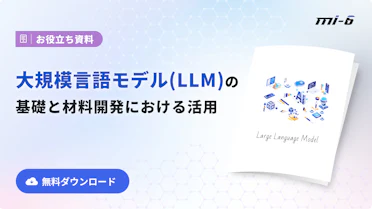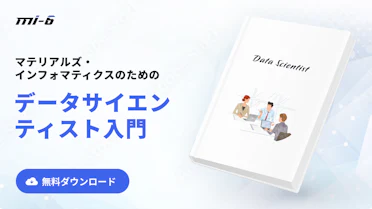Introduction
The modern chemical industry has embraced a product-centric approach that encompasses not only the manufacturing process but also the design of functional materials (e.g., catalysts) and end products. In the realm of materials design, the application of AI and Materials Informatics (MI) to Design of Experiments (DoE) has gained traction as a means of optimizing material properties and structures.
However, designing at the process scale requires additional considerations. This article focuses on critical aspects of chemical process engineering and explores the role of data-driven methodologies in addressing these challenges.
Framework for Product Development Processes
The development of chemical products involves multiple stages, which can be simplified into the following sequence:
- Market Research
Identify customer and market needs, and develop a project plan accordingly. - Translation into Product Specifications
Convert market needs into product specifications and the material properties required to meet those specifications. - Material Design
Design and realize materials with the necessary properties. - Process Design
Conceptualize the manufacturing process, including process flow configurations (flowsheet design), operating conditions, and impact assessments. - Process Development
Validate the design using pilot plants and refine it through optimization. - Manufacturing Stage
Operate the plant and implement retrofitting as necessary. - Delivery of Final Product
Provide products to the market that meet the designed performance specifications.

Fig.1 General Framework for Chemical Product Development
When applied to functional materials like catalysts, this framework often refers to the processes where these materials are used. In some cases, it may also encompass the manufacturing processes for these materials themselves.
Core Objectives of Process Design
The primary goal of process design is to assess the arrangement of unit processes (flowsheet design), operating conditions, and their collective impact in a way that meets product specifications. Specific design tasks, such as detailed 3D layouts, typically fall outside the scope of conceptual design and are managed by dedicated teams.
Incorporating conceptual design, including process design, into product development offers several advantages:
- Cost Reduction and Time Efficiency
Even in scenarios where plant-level experiments are challenging, conceptual design can identify viable materials or processes, potentially reducing the number of tests required for development. - Flexible Design Evaluation
By altering material and process design parameters, it becomes possible to evaluate changes in manufacturing costs and product performance. This enables early identification of critical factors that influence product pricing and market acceptance.
In the chemical industry, decisions made during the conceptual design phase have a profound impact on project success. For example, in catalyst-driven reactions, factors such as reaction temperature and catalyst type directly affect product purity and yield, making their optimization indispensable. Conceptual design also plays a crucial role in evaluating safety and economic feasibility at the plant scale.
Methodologies in Chemical Process Design
Generating conceptual designs for chemical processes primarily relies on two approaches: experience-based design and model-based design.
Experience-Based Design
This method is rooted in the expertise of engineers and relies on trial-and-error experiments. It heavily depends on the know-how of skilled practitioners and historical success cases.
Application Scenarios
- Processes with fixed configurations, such as retrofitting existing plants or adhering to established industry practices.
- Simple process structures with limited design options.
Advantages and Challenges
- Advantages: Provides quick results for straightforward designs and leverages existing knowledge efficiently under certain conditions.
- Challenges: Inefficient for complex processes requiring simultaneous optimization of multiple design parameters. Unsuitable for exploring new processes or structures.
Model-Based Design
This approach leverages mechanistic models and process simulation software to guide design. It evaluates potential candidates through simulations and optimization techniques.
Representative Tools
- Commercial Software: Aspen Plus, gPROMS, etc.
- Open-Source Tools: DWSIM, a growing option of interest.
Advantages and Challenges
- Advantages: Enables generation and comparison of multiple design candidates using computational resources. Reduces experimental costs and time, particularly in scenarios requiring evaluation of numerous conditions.
- Challenges: Effective use requires robust data and accurate models. Computational resources and simulation precision can also be limiting factors.
Current Status and Challenges in Materials and Process Design Using MI
Recent advancements in Materials Informatics (MI) and Artificial Intelligence (AI) have revolutionized material design, with numerous application cases reported. However, applying these technologies to process design or plant-level tasks reveals several challenges:
Data Scarcity and Model Interpretability
- Risks of Incorrect Recommendations: Erroneous recommendations in process conditions, such as temperature or pressure, can severely impact plant operations and safety.
- Key Needs: Improving data collection, enhancing model reliability, and ensuring interpretability are essential to mitigate these risks.
High Experimental Costs
- Plant-scale experiments are costly, necessitating accurate models that can achieve high precision using limited datasets.
Safety Concerns
- Process design prioritizes plant safety. Misguided AI recommendations can introduce risks with far-reaching consequences for plant operations.
These challenges highlight the importance of refining data-driven tools to complement model-based design methodologies, a topic explored in the next section.
Applying DoE to Process Design
The use of MI/DoE tools in process design involves adapting experimental optimization techniques for computational simulations. The framework can be broken down into the following steps:
1. Defining the Process
Using a process simulator (e.g., DWSIM, Aspen Plus), set up the process flowsheet, thermodynamic models, and necessary operating conditions. This phase establishes the foundation for simulation, clarifying the process structure and simulation framework. If a simulator is unavailable, alternatives like custom Excel sheets or bespoke programs can be employed.
2. Defining Design Variables and Objectives
Identify the following:
- Design Variables (Inputs): These include parameters such as reaction temperature, feed flow rates, and pressure. Define ranges for each variable (e.g., temperature: 200–260°C; flow rate: 6–15 t/h).
- Objectives (Outputs): Specify the target criteria (e.g., conversion rate > 99%, product purity > 99%) to serve as benchmarks for optimization.
3. Generating Initial Conditions
Based on the defined ranges of design variables, generate sampling points. Instead of random sampling, efficient methods rooted in experimental design principles are used to optimize coverage. Adjust the number of points and DoE levels based on process complexity.
4. Creating an Initial Dataset via Simulation
Input the sampled design variables into the simulator and obtain the corresponding objective values. This step produces an initial dataset (X, Y). Automation is crucial here—manually processing large numbers of sampling points can be time-intensive, so scripting or software features are used to streamline the process.
5. Performing Bayesian Optimization
Using the initial dataset, Bayesian optimization is conducted:
- Constructing a Predictive Model: A Gaussian Process (GP) model predicts objective values based on design variables.
- Generating Candidates: The model identifies promising design variables for evaluation in the next optimization step.
- Selecting Candidates: Narrow down the candidates for further verification.
6. Validating Candidates and Updating the Dataset
Input the selected design variables into the simulator to acquire true objective values. Add these results to the dataset, and repeat the Bayesian optimization process. Iteratively refining the dataset enables the identification of designs that achieve the desired targets.

Fig.2 Example Framework for Data-Driven Process Design
Practical Considerations for Implementation
- Managing Candidate Numbers: Set appropriate limits on the number of generated and selected candidates to maintain computational efficiency. Excessive candidates can escalate computational costs.
- Handling Complex Flowsheets: For highly intricate processes, divide the flowsheet into critical subprocesses and optimize them individually.
- Defining Stopping Criteria: Ensure iterations terminate when objective values have been sufficiently achieved.
Advantages of This Framework
The outlined process design framework shares many similarities with experimental optimization methods, allowing researchers to leverage simulation data to efficiently drive the design process. This approach is particularly effective in the following scenarios:
Testing Conceptual Designs
Process development teams can validate conceptual designs without incurring high experimental costs. For example, simulations can quickly assess the effects of adjusting catalyst types or reaction temperatures.
Exploring Optimal Conditions
Even when initial designs are uncertain, this framework efficiently explores candidates, identifying conditions that align closely with the desired objectives. This reduces the frequency of plant-scale experiments, boosting project efficiency.
However, simulations serve as a complement, not a replacement, for experiments. Final plant trials and validation should be based on simulation-derived optimal conditions to ensure accuracy. This synergy enhances the efficiency and precision of the overall product development cycle.
Outlook
Modern chemical product development requires simultaneous consideration of both material and process conceptual designs. These elements are indispensable for proposing material and process candidates that meet key requirements, such as product performance and manufacturing cost efficiency. This article has focused on the role of Design of Experiments (DoE) in process design and described how data-driven approaches can facilitate these tasks.
The data-driven, model-based design framework offers several advantages to researchers, including:
- Efficient Experimental Planning: Rapidly generate sampling points for simulations, significantly reducing the time required for experimental setup.
- Swift Identification of Optimal Candidates: Screen design conditions quickly to uncover potential solutions.
- Application in Process Development Teams: Optimize real-world process conditions, from concept to pilot scale.
The framework presented here exemplifies how computational tools can enhance process design by integrating simulation and optimization techniques. However, its true value lies in its application to real-world scenarios. Demonstrating the framework's effectiveness through case studies will further solidify its practicality and impact.
Future Work
Our current efforts aim to validate this framework using concrete examples. In upcoming articles, we will explore specific processes to illustrate how this framework operates in practice. By doing so, we hope to provide clear evidence of the feasibility and effectiveness of integrating MI and DoE into process design.
This approach not only improves the efficiency of product development cycles but also opens new avenues for innovation. By leveraging data-driven methods, researchers can tackle increasingly complex challenges while ensuring safety, cost-effectiveness, and scalability in chemical process design.
References
- Zhang, L.; Mao, H.; Liu, Q.; Gani, R. Chemical Product Design – Recent Advances and Perspectives. Current Opinion in Chemical Engineering 2020, 27, 22–34. https://doi.org/10.1016/j.coche.2019.10.005.
- Stephanopoulos, G.; Reklaitis, G. V. Process Systems Engineering: From Solvay to Modern Bio- and Nanotechnology. Chemical Engineering Science 2011, 66 (19), 4272–4306. https://doi.org/10.1016/j.ces.2011.05.049.
- Zhou, T.; Gani, R.; Sundmacher, K. Hybrid Data-Driven and Mechanistic Modeling Approaches for Multiscale Material and Process Design. Engineering 2021, 7 (9), 1231–1238. https://doi.org/10.1016/j.eng.2020.12.022.
- Mowbray, M.; Mattia Vallerio; Perez-Galvan, C.; Zhang, D.; Antonio; Navarro-Brull, F. J. Industrial Data Science – a Review of Machine Learning Applications for Chemical and Process Industries. Reaction Chemistry and Engineering 2022, 7 (7), 1471–1509. https://doi.org/10.1039/d1re00541c.

